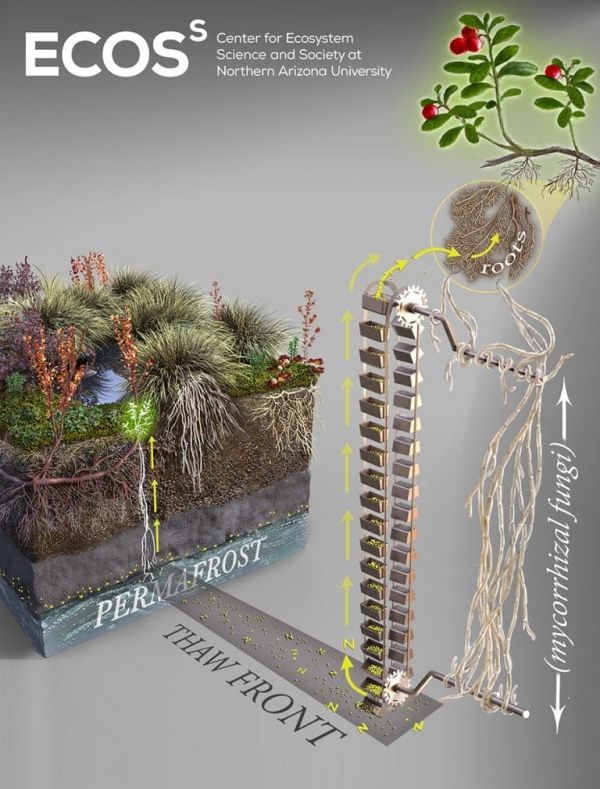Like a long-distance food delivery app with no apparent highway, fungi that associate with shallow-rooted shrubs in the tundra are accessing deep stores of nitrogen being released by thawing permafrost. The findings by Northern Arizona University researchers, announced this week in New Phytologist, could change scientists’ understanding of who accesses nutrients from permafrost, and how.
“This just doesn’t fit the paradigm of how we think these plants and their mycorrhizal partners work together,” said lead author Rebecca Hewitt from the Center for Ecosystem Science and Society (Ecoss) at NAU. “Previously, we thought only plants with extended root systems could access nutrients near the permafrost thaw front. But we saw that all these plants were using deep nitrogen, whether they had deep root systems or not, suggesting that mycorrhizal partners may provide access to the deep, cold permafrost table.”
As researchers race to better understand the carbon cycle and how a warming Arctic will affect the amount of greenhouse gases in the Earth’s atmosphere, this discovery offers clues about where nitrogen and carbon released from thawing permafrost will go. If the burgeoning plant community in the tundra can access nitrogen as it’s released from thawing permafrost, then this fungal connection to the thaw front may be helping to offset carbon losses, since more nitrogen means more plant biomass to pull down carbon from the atmosphere.
Continue reading at Northern Arizona University
Image via Northern Arizona University


